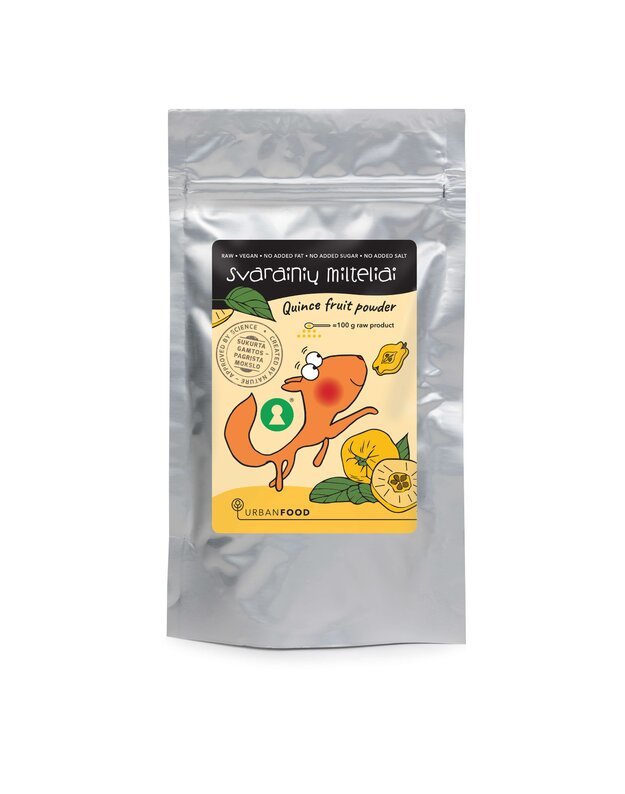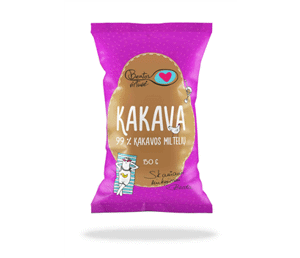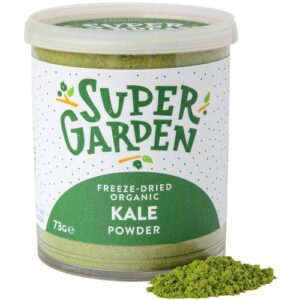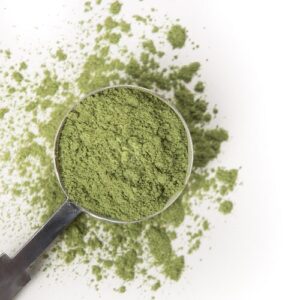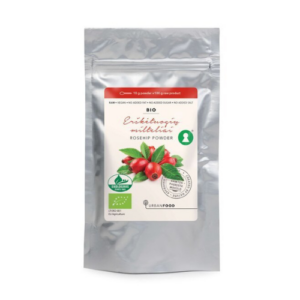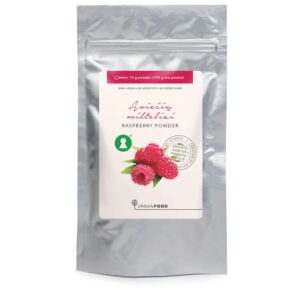Urbanfood Quince Fruit Powder, raw, 100 g
€6.99
- Quince fruits are rich in vitamin C (167%*), organic acids, pectin and fermentative substances, polyphenols, various mineral substances – potassium (833%*), magnesium (20%*), phosphorus (19%*), iron (36%*).
- Quince fruit peel contains essential oils. Vitamin C helps maintain normal immune activity, energy metabolism, nervous system activity and protects cells from oxidative damage.
- Quince powder has a sour taste, goes well with cakes, honey.
- Stir into smoothies or desserts. Also tastes great in yoghurt or cereals.
1 teaspoon of quince powder = 100 g. of fresh fruits.
How to use: Provide health promoting qualities of each dish. Perfect for soups, casseroles, salads, baked goods, smoothies, juices, natural yogurt.
Fields of use: hot and cold beverages, instant beverages, ice tea, tea and infusions, beverages with milk, yogurt, shakes, spray whipped cream; ice cream, sherbets, ice cream preparations, semifreddos; desserts, flairs (cold desserts), puddings, creams; sweet and salted pastry, bakery products, cakes, biscuits; cake and sweets preparations, icing, creams and fillings; filled chocolate, pralines, fruit jellies, sugared almonds, candies; nougats; dietetic dishes, baby foods, supplements, over-the-counter medicines, nutraceuticals; jams and marmalades.
✓ Vegan ✓ Gluten Free ✓ Lactose-Free ✓ No Preservatives
✓ No Added Sugar ✓ No Added Fat ✓ Cholesterol Free ✓ Nut Free ✓ All Natural
Ingredients: dried quince fruits 100 %.
Net weight: 100 g.
Out of stock
About quince fruit: Quince is a fragrant fruit belonging to the Rosaceae family, which also includes apples and pears. It is native to the warm temperate regions of Southwest Asia.
Quince is a seasonal fruit and is available from autumn to winter. When ripe, this fruit is golden yellow in color and resembles a pear in shape. It has a fuzzy surface that is similar to that of peaches and a light yellow, gritty flesh with multiple seeds in the center. It has a tart flavor and is seldom eaten raw. It is often baked or frozen to eliminate its acidity. In fact, it is used in traditional recipes in the Middle East and Mediterranean regions where it is stewed with lamb, goat and pork. The Asian quince variety, being softer and juicier, is often used to make preserves and jellies. Sometimes, it is also used to impart tartness to the traditional apple pie.
Quince fruits are rich in vitamin C (167%*), organic acids, pectin and fermentative substances, polyphenols, various mineral substances – potassium (833%*), magnesium (20%*), phosphorus (19%*), iron (36%*). Quince fruit peel contains essential oils. Vitamin C, which is in quince fruits, helps maintain normal immune activity, energy metabolism, nervous system activity and protects cells from oxidative damage.
| Nutrition facts: | |
| product nutritional
energy value per 100 g Fat Carbohydrate of which are sugars Protein Fiber Fats of which saturated fatty acids |
919 kJ/319 kcal 1 g 75.6 g 35,4 g 1,2 g 22.8 g 0.4 g 0.1 g |
*Reference average adult daily intake (8400 kJ/ 2000 kcal).
| Weight | .11 kg |
|---|
Shipping is free for orders over €55 for up to 15kg.
Otherwise, it’s a fixed flat rate of €5.95 for up to 15kg of shopping. This just about covers what we pay Fastway for each shipping label.
What it doesn't cover is the cost of handpicking and carefully packing your order. We absorb those costs so we can keep the shipping charge as low as possible for you.

